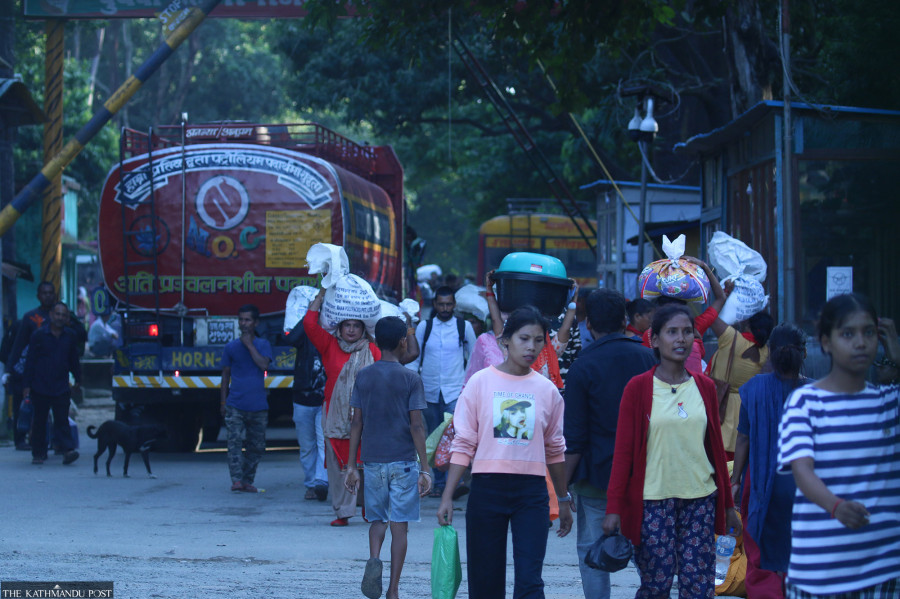Health
Open border with India big challenge in meeting malaria elimination goal
Nepal had pledged to reduce indigenous malaria cases to zero this year. But authorities have already reported one indigenous case and 20 imported ones so far this year.
Arjun Poudel
No new cases of indigenous malaria should be detected in Nepal this year to meet the elimination target of the disease by 2025 to which the country is committed.
However, at least 21 new cases of malaria, including one indigenous case, have already been reported from various districts throughout the country since the start of 2023.
“We are still verifying the indigenous cases,” said Dr Gokarna Dahal, chief of the Vector Control Section at the Epidemiology and Disease Control Division. “But we cannot rule out the chances of their detection.”
What has alarmed the health authorities, however, is the imported cases of malaria from India that can be a roadblock to the country’s goal to eliminate the disease.
Nepal is among the UN health body’s E-2025 member countries that have the potential to eliminate the disease by 2025. In April 2021, the UN health agency launched the E-2025 initiative to halt the transmission of malaria in 25 identified countries by 2025.
India is on the list of countries that have committed to eliminating the disease by 2030—five years later than Nepal.
To earn the ‘malaria-free’ status in 2026, Nepal needs to bring down indigenous cases or local transmission of the disease to zero and zero deaths from 2023, and sustain zero cases for three consecutive years, according to the World Health Organisation.
Malaria-related deaths had stopped since 2016 but five years later, in 2021, the country recorded one death from the disease.
Officials at the Epidemiology and Disease Control Division said imported cases of malaria are the biggest challenge in achieving the target.
According to data provided by the division, 517 cases of malaria were detected in the country in 2022. Of them, 473 were imported. In 2021, the number was 491, of which 459 were imported. And in 2020, the number was 447, of which 407 were imported.
Officials say most of the imported malaria cases are from India. Some people returning from the Middle-East and the African continent (especially the security personnel) are also found to be infected with the disease.
To lessen the risks of local transmission of the disease from imported cases, health authorities carry out malaria screening at border points. The Health Ministry has supplied rapid diagnostic test kits to the health desks set up at border crossings with India.
However, the over 1,850km open and porous India-Nepal border and a high mobility of people between the countries hinder the government’s efforts to detect the disease at the entry points.
Health workers deployed at the international health desk setup at Nepalgunj’s Jamunaha entry point on the border carried out over 20,000 tests of malaria in 2022. But only three people were found to be infected with the deadly disease.
“What has alarmed us more is that 80 imported malaria cases were found in Narainapur Rural Municipality of Banke district during the review period,” said Dahal, chief of the Vector Control Section at the Epidemiology and Disease Control Division. “People did not use Jamunaha to enter the country. The unregulated border between the two countries is the main challenge in eliminating malaria.”
Narainapur, a remote municipality in the district’s midwestern region bordering India, which has currently been witnessing a massive measles outbreak, was also one of the worst-hit areas when the Covid pandemic gripped the country in the spring of 2020.
Experts warned that imported cases, which are beyond Nepal’s control, can still cause local transmissions in the country.
Earlier, the Ministry of Health and Population had sought help from India for intervention measures to lessen imported malaria cases. Officials held meetings with Indian officials and drew their attention to the growing number of imported malaria cases in Nepal. Officials had agreed to share information on malaria cases between the two countries in order to make the measures effective.
“Despite our efforts, imported cases have been growing every year,” said Dahal.




 18.12°C Kathmandu
18.12°C Kathmandu













%20(1).jpg&w=300&height=200)
